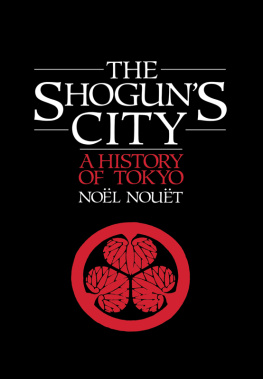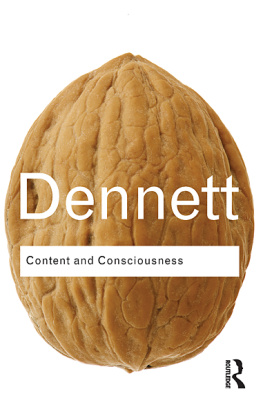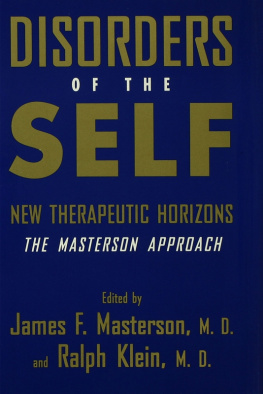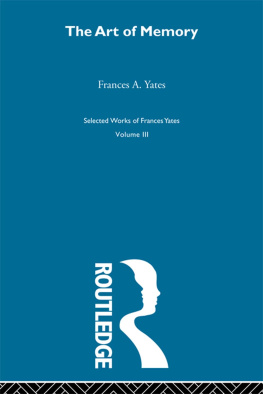THE SHOGUNS CITY
A HISTORY OF TOKYO
THE SHOGUNS CITY
A HISTORY OF TOKYO
NOL NOUT
Translated by John & Michle Mills
LONDON AND NEW YORK
THE SHOGUNS CITY
A History of Tokyo
All rights reserved. No part of this publication may be reproduced or transmitted, in any form or by any means without permission
MAISON FRANCO-JAPONAISE
The publishers wish to express their sincere thanks to Maison Franco-Japonaise for their kind cooperation in facilitating publication of this first English edition.
(English translation) John & Michle Mills 1990
First published 1990 by RoutledgeCurzon
2 Park Square, Milton Park, Abingdon, Oxon, OX14 4RN
270 Madison Ave, New York NY 10016
Transferred to Digital Printing 2005
ISBN 0-904404-61-7
British Library Cataloguing in Publication Data
Nout, Nol, 18851968
The Shoguns city: a history of Tokyo.
1. Japan. Tokyo, history
I. Title II. Histoire de Tokyo. English
952.135
ISBN 0-904404-61-7
Set in Goudy Old Style Roman 11 on 12pt by Visual Typesetting, Harrow, Middlesex.
Contents
Acknowledgements
__________________________________
SOME thirty years have passed since the death of Nol Nout. He was a revered teacher, historian, writer and talented woodblock artist who became a personal friend during the 1950s in Japan. His knowledge of Tokyo and of the Tokyo as depicted by the great Ukiyoe artists together with his modesty, humour and humanity gave an added dimension to his friendship. He asked my wife and me to translate his Histoire de Tokyo into English. We prepared a version for him to peruse before he died and I am grateful to Mrs Joanna Lydall for typing it and to Mr William Stubbs for editing it. Then, 30 years later, after retiring, I am happy to be able to thank Mrs Annabel Roe for re-typing the translation, Dr Gordon Daniels for re-editing it, Mr Donald Richie for bringing it up to date and writing a preface to it, Dr Augustin Berque of the Maison Franco-Japonaise, Tokyo, for his kind cooperation regarding copyright, and Mr Paul Norbury for publishing it. For me the publication symbolizes a lifetimes commitment to Anglo-French and Anglo-Japanese understanding and the affection that my wife and I had for our elderly friend and colleague in Tokyo in the 1950s. The appearance of the book, will I trust, serve to revive the memory of Nol Nout, who was loved and respected by all who had the good fortune to know him.
Foreword
__________________________________
TOKYO IS ONE of the great capitals of the world. It is certainly the most dynamic capital of the Far East and it seems destined to play an important role in the future. It is no longer a city of mystery. It has lost that exotic reputation and picturesque halo which the name of Peking still suggests and which surrounded the whole of Japan not so long ago in the books of Pierre Loti and Lafcadio Hearn, and in the tales of the rare travellers who ventured to Japans shores. Tokyo is no more the end of the world; these days visitors come to Japan from all quarters of the globe. From Paris or London it can take as little as twenty hours to fly there and from San Francisco about fifteen.
From its birth to its appearance today as a modern metropolis with its ever-increasing population, now standing at over eight million, and its modern buildings, the gradual development of Tokyo in all its colourful facets presents a fascinating story.
Tokyo has only been an imperial capital since 1868 and the feudal period has hardly passed into the pages of history. But although Tokyo is old, its age cannot be compared with that of Kyoto or with many of the old cities of the West. However, it is older than the cities of America. It is a city that has already played its part in history.
What remains of this past in the capital today? Or, in other words, what is left in present-day Tokyo of former Edo, or Yedo (both forms were used prior to 1868)? Archaeologists are disappointed. In a town made up originally of wooden buildings, shaken by terrible earthquakes, ravaged by a multitude of fires and finally severely bombed during 1945 by the American air force, evidence of past centuries scarcely exists. Apart from the hills, the parks, the canals and a few stone blocks, little trace of anything old can be found except mere names. Yet these names in themselves are important and conjure up so many facts, traditions and personalities that they make a sort of abstract background to the real life of this vast city. If one searches patiently enough, it is possible to rediscover much of the soul of the old town beneath its modern dress. For example, certain twentieth-century businesses have been in the hands of the same family for two or three hundred years, and their records have survived all the upheavals. A festival in a certain district might date back to feudal times. Temples have been built on the sites where they used to stand, and are often exact replicas. The shows at the Kabukiza theatre depict famous events in the history of Japan and of Tokyo itself. Even now people born in Tokyo gladly call themselves edokko (Child of Edo) although their houses sometimes shake to their foundations at the passing of nearby buses or underground trains.
Tokyo is not a town drawn according to an ordered geometric plan like Kyoto. It is an agglomeration that has grown up over a period of three centuries around a busy centre. It has swallowed up its surroundings by gradually improving its means of communications, or by transforming certain districts, without detaching itself from its original heart the Palace. In the same way, Paris grew first around the Ile de la Cit and then around the Louvre and the Tuileries. In Paris the names of such villages as Montmartre, Belleville, Charonne, Montrouge, Auteuil and Villiers still survive. In the same way, without losing the rural significance of their original names, Azabu, Meguro, Shibuya, Ushigome, Hongo and Omori have been assimilated into Tokyo as it grew in size.
NOEL NOUT
Introduction
by Donald Richie
__________________________________
THE ORIGINAL French edition of this book (1961) began with Nol Nouts description of what he intended his book to be. He had no claims, he said, to have written a scholarly work. Rather he wanted to present a kind of emakimono,picture-scroll, of Tokyo that would be pleasant to peruse. At the same time, however, the story unfolded was to be as factually correct as possible.
The authors simile of the emakimono was particularly apt in that in addition to being an educator and a poet he was also a printmaker and had already produced several portfolios devoted to his adopted city. Tokyo vue par un tranger was in two volumes of fifty prints each Tokyo, ville ancienne, capitale moderne,was a single volume of fifty prints, and Tokyo consisted of twenty-four prints.
He had also already written about the city in a collection of poems and sketches called En coutant le Veilleur de Nuit furthermore, he was able to draw on his earlier experience of writing a history of the French capital, Paris, depuis Deux Milles Ans.
So, when he began his history of Tokyo in the early 1950s he had already been living in the city for a number of years (his first residence was before WWII) and he knew it well. In the interests of being as factually correct as possible, he reread all the authorities then available, asked his friend Georges Bonmarchand to check all dates and names, and relied greatly on the assistance of Jumpei Kawashima, a fellow professor (at Waseda University, from which Nout had graduated he himself was by this time teaching at Tokyo University) and friend who, as the author has written, was a true








